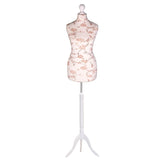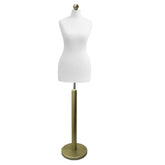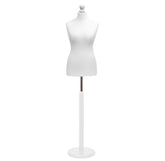Expert Guide to Storage for Fabrics
Proper storage for fabrics is about so much more than just tidying up your creative space. Think of it as an essential part of the craft itself—a practice that preserves the colour, texture, and integrity of every single piece of material you own. If you get it right from the start, you're protecting your investment from common threats like sunlight, pests, and moisture, ensuring your textiles stay pristine for whatever project comes next.
Why Proper Fabric Storage Matters

Every length of fabric in your collection is bursting with potential, but it's also a financial investment. Leaving materials exposed or just shoved in a corner is like leaving money on the table, vulnerable to damage that can make them completely unusable. It's a heartbreakingly common story for many of us: that beautiful bolt of silk fades by the window, or a cherished roll of cotton develops mysterious spots in a damp part of the room.
The good news? These problems are entirely preventable with a bit of a strategy. The goal is simple: create a stable, controlled environment that shields your textiles from their natural enemies.
The Common Enemies of Textiles
Knowing what you're up against is the first step toward protecting your stash. There are several environmental factors that can cause irreversible damage to fabric fibres over time.
- Sunlight and UV Rays: Direct sunlight is public enemy number one for fabrics. Its ultraviolet (UV) rays relentlessly break down dyes, causing vibrant colours to fade and whites to turn a sad yellow. Over time, that same exposure weakens the fibres, making the material brittle and easy to tear.
- Humidity and Moisture: High humidity is a recipe for disaster. It's the perfect breeding ground for mould and mildew, which not only stain fabrics but also leave behind a musty odour that’s nearly impossible to shift. What's more, fluctuating humidity causes natural fibres like cotton and wool to expand and contract, which can distort their shape.
- Pests: Tiny intruders like clothes moths and carpet beetles see your natural fibres—wool, silk, cotton—as a buffet. An infestation can happen quickly and quietly, leaving you with a collection peppered with tiny, irreparable holes.
- Extreme Temperatures: Both heat and cold can be surprisingly harsh. Excessive heat can make synthetic materials brittle, while freezing temperatures can do the same to delicate natural fibres.
A well-organised storage system isn't just about being tidy; it's an active preservation strategy. By controlling the environment, you safeguard the longevity and usability of every piece in your collection. Your creative resources will be ready and waiting the moment inspiration strikes.
The Core Principles of Safe Fabric Storage
To fight back against these threats, your storage for fabrics needs to be built on a few core principles. You're aiming for a space that is clean, dark, dry, and temperature-controlled. Think of it as creating a personal archive for your materials.
Now, this doesn't mean you need a high-tech, climate-controlled vault. Often, a designated wardrobe, a set of archival-quality boxes in a spare room, or even a well-ventilated cabinet will do the job perfectly. The key is consistency and awareness. Before you rush out to buy containers, take a moment to really look at what you have. A small stack of fat quarters has very different needs than several heavy bolts of upholstery fabric.
By grasping these foundational concepts, you can shift from simply "tidying up" to mindfully preserving your materials. This initial understanding sets the stage for making smart decisions about containers, organisation, and long-term maintenance, ensuring your fabrics remain in perfect condition for years to come.
Auditing Your Space and Fabric Collection

Before you even think about buying a single container or building a new shelf, you need to know exactly what you’re working with. A truly effective system for the storage for fabrics doesn't start at the shop; it starts with a clear-eyed look at two things: your fabric collection and your available space. Taking this step first saves you from the classic mistake of buying storage solutions that just don't fit your materials or your room.
The goal here is to create a detailed inventory. Don't worry, this doesn't mean you need a complicated spreadsheet. You just need a solid grasp of the sheer volume and variety of your stash. The best way to do this is to pull everything out into one area where you can see it all. I know it can feel a bit overwhelming, but it’s the only way to truly understand the scale of what you have.
Taking Stock of Your Fabric Stash
With your entire collection laid out, it's time to start sorting. This is where you begin to see the different storage needs hiding within your stash. After all, you wouldn't store delicate silk the same way you’d treat a hardy denim.
Start by grouping your fabrics into logical categories. A few tried-and-tested ways to sort are:
- By Fabric Type: Separate natural fibres like cotton, wool, and linen from synthetics like polyester and nylon. It's also a good idea to give delicate fabrics, such as chiffon or lace, their own dedicated pile.
- By Size and Cut: Make distinct groups for large bolts of yardage, fat quarters, and those smaller, precious scraps. Each size requires a completely different storage approach to stay tidy and accessible.
- By Project Status: This one is a game-changer. Create a separate spot for fabrics already earmarked for current or upcoming projects. This keeps them visible and stops them from getting lost back in the main collection.
This sorting phase is also the perfect time for a gentle declutter. If you stumble upon fabrics you haven't touched in years and have no real plans for, why not donate or sell them? A more curated collection is always far easier to manage.
Measuring and Mapping Your Available Space
Now, let's turn our attention from the fabric to the room itself. Smart storage is as much about clever spatial planning as it is about the textiles. Before you start, it’s worth understanding what is space planning to really get the most out of every inch. Grab a tape measure and start evaluating every potential spot.
Look beyond the obvious. Could you go vertical with tall shelving units? Is there an awkward alcove that could be home to some custom-built shelves? Don’t overlook the potential of under-bed storage or the top shelf of a wardrobe.
Your audit isn’t just about finding empty spots; it's about creating a functional map. Note the dimensions of each potential area—height, width, and depth. This data is your blueprint for choosing containers that fit perfectly, eliminating guesswork and costly mistakes.
Once you have a clear inventory of your fabric and a detailed map of your space, you can finally begin to match the two. You might realise that your big collection of cotton yardage would fit perfectly in that spare wardrobe, while your smaller scraps are better suited to clear bins on a bookshelf.
If you’re after more ideas for setting up your creative haven, our complete guide on https://www.displayguru.co.uk/blogs/news/sewing-room-organization is packed with practical tips. This kind of strategic planning is what ensures every piece of fabric has a designated, logical home, making your entire creative process smoother and much more enjoyable.
Selecting the Best Containers and Solutions
Now that you've taken stock of your fabric collection and measured your space, it’s time for the fun part: choosing the right homes for all your textiles. Think of this as more than just buying boxes; you're creating a preservation strategy. The containers you choose will make or break how accessible, organised, and well-kept your materials are, so it’s a decision worth getting right for a truly effective storage for fabrics system.
Let's be clear: not all containers are created equal. What works brilliantly for a bulky roll of upholstery vinyl will be a disaster for delicate silks or your prized collection of fat quarters. The key is to match the container to both the fabric and how you actually work.
Plastic Bins: The Versatile Workhorse
Clear plastic bins are a go-to for many of us, and for good reason. Being able to see what’s inside at a glance saves an incredible amount of time—no more digging through five different boxes to find that one floral print you know you have somewhere.
But a word of caution: not just any plastic will do. You'll want to look for bins made from polypropylene. It's a stable, inert plastic, which means it won't off-gas chemicals that could damage your fabric over time. If you pick up a bin and it has a strong chemical smell, put it back. For your most light-sensitive fabrics, either tuck the clear bins inside a wardrobe or opt for opaque ones to be safe.
Expert Tip: If you live in a humid climate, pop a few silica gel packets into your plastic bins before sealing them. They're fantastic for absorbing any rogue moisture, which keeps mould and mildew from ever getting a foothold.
Archival Boxes: The Preservation Specialist
For the true treasures in your collection—vintage silks, heirloom linens, or that bolt of expensive wool you're saving for the perfect project—acid-free archival boxes are the undisputed champion. These are the same type of boxes museums use to keep historical textiles safe for centuries, and they're designed to be completely chemically inert.
This means they won’t leach acids into your fabrics, a common problem with standard cardboard that can cause yellowing and brittleness. While they are a bit of an investment, archival boxes offer the best possible protection against light, dust, and environmental nasties, making them essential for your irreplaceable pieces.
- Best for: Delicate natural fibres like silk, wool, and antique textiles.
- Protection Level: Offers the highest level of protection from light, acid degradation, and dust.
- Consideration: They are opaque, so clear and consistent labelling is absolutely essential for organisation.
Cabinets and Shelving: Open vs. Closed Storage
The choice between open shelving and closed cabinets really boils down to balancing easy access against robust protection. Open shelving is fantastic for creative inspiration; having your entire stash visible and within reach makes it so much easier to pull palettes together.
The downside, of course, is exposure. Fabrics on open shelves are sitting ducks for dust, fading from sunlight, and even pests. If you love the open-shelf look, reserve it for your hardworking, frequently used fabrics like cottons and denims. To make your space even more efficient, think about how shelving can work with your main workspace. You can get some great ideas for integrating storage by exploring designs for a sewing and cutting table.
Closed cabinets, on the other hand, offer a fortress of protection. Wooden cabinets with solid doors are especially good at blocking out light. Just make sure any wood is properly sealed; you don't want the natural acids from the wood itself to transfer to your fabrics.
This image offers a quick visual guide to how some of the most common storage options stack up against one another.

As you can see, while vacuum bags save a lot of space, their lower protection level due to the risk of permanent creasing makes them a poor choice for anything you plan to store long-term.
To help you decide, let's break down the pros and cons of the most common storage containers. Each has its place, depending on your fabric and your budget.
Comparing Common Fabric Storage Solutions
| Storage Type | Best For | Protection Level | Accessibility | Average Cost |
|---|---|---|---|---|
| Clear Plastic Bins (Polypropylene) | Everyday cottons, poly-blends, quilting fabrics, and works-in-progress. | Good - Protects from dust and moisture. Limited UV protection. | Excellent - Contents are visible at a glance. | £ |
| Archival Boxes (Acid-Free) | Heirloom fabrics, silks, wools, linens, and vintage textiles. | Excellent - Protects from light, dust, and acid degradation. | Fair - Requires meticulous labelling as contents are hidden. | £££ |
| Open Shelving | Frequently used, durable fabrics like denim, canvas, and cottons. | Poor - Exposed to dust, light, and pests. | Excellent - All fabrics are visible and immediately accessible. | £-££ |
| Closed Cabinets/Drawers | Light-sensitive fabrics and materials that need extra protection. | Very Good - Excellent protection from light and dust. | Good - Keeps things tidy, but requires opening to see contents. | ££-£££ |
| Fabric Bolts/Mini-Bolts | Larger cuts (over 1 metre) to keep them crease-free and organised. | Fair - Fabric is protected from hard creases but exposed to elements. | Very Good - Easy to see and measure from. | £ |
Choosing the right container is about finding that sweet spot between protection, cost, and how you need to access your materials. A mix-and-match approach is often the most practical solution for a diverse fabric collection.
Speciality Solutions: Bags and Beyond
Beyond the big three—bins, boxes, and shelves—a few other solutions can be incredibly useful. Breathable cotton or muslin bags are perfect for storing individual garments or special lengths of wool or silk. They keep the dust off while still allowing crucial air circulation.
And what about vacuum-sealed bags? They seem like a dream for saving space, and for short-term storage of bulky bedding, they can be great. However, I strongly advise against them for long-term fabric storage. The intense compression can set permanent, ugly creases and completely ruin the natural loft and texture of the fibres.
By carefully weighing these options, you can build a storage system that not only protects your investment but also makes your creative process smoother and more enjoyable.
How to Prepare and Organise Fabrics for Storage

Once you've picked out your containers, the real work begins: getting your fabrics ready for their new home. It’s tempting to just start folding and stashing, but taking the time to prepare everything properly is what separates a short-term tidy-up from a genuine, long-lasting storage solution.
Think of this as an investment. A little effort now will pay dividends later, keeping your fabrics pristine, organised, and ready to use the moment inspiration strikes. This is the core of effective storage for fabrics.
The Importance of Pre-Washing
I'm often asked if it's really necessary to wash fabrics before putting them away. For most textiles, the answer is a definite yes. Fabrics straight from the bolt are often treated with sizing, starches, or other chemicals to keep them looking crisp in the shop.
Over time, these residues can attract pests and even cause discolouration or fibre damage. Pre-washing gets rid of all that. It also pre-shrinks the material, so you avoid any nasty surprises when you eventually get around to your project.
Expert Tip: Always check the manufacturer's care instructions first. If you're working with delicate vintage pieces where washing feels too risky, a gentle vacuum with a soft brush attachment or a good airing outdoors on a dry, overcast day can do a great job of removing surface dust.
After washing, make sure every single piece is completely dry before it goes into a storage box. Even the slightest hint of damp can create a perfect breeding ground for mould and mildew, which can quickly ruin an entire collection.
Folding and Rolling to Minimise Creases
How you fold your fabric is just as important as where you store it. Cramming fabric into a box with sharp folds will create permanent creases that are a nightmare to iron out. Worse, those harsh fold lines can actually weaken the fibres over time.
The goal is to use soft, gentle folds—or even better, to get rid of them completely by rolling.
- For smaller cuts (under a metre): A simple, neat fold is usually fine. Just avoid folding it into a tight, compact square. Aim for fewer, softer folds to give the fabric some room to breathe.
- For larger yardage: Rolling is almost always the better option. You can roll fabric around an acid-free cardboard tube (like those for wrapping paper) or just roll it onto itself. No creases, no problem.
- For delicate materials: Silks, velvets, and chiffons need extra care. I always recommend rolling them with a layer of acid-free tissue paper to cushion the fibres and prevent crushing.
A method that has become a favourite in the sewing community is the "mini-bolt" technique, especially for quilting cottons. By wrapping your fabric around comic book boards, you create tidy, uniform, stackable units. They look fantastic on a shelf and keep the material perfectly smooth.
Creating a Logical Organisational System
With your fabrics prepped, it's time to think about how you’ll actually organise them. There’s nothing more frustrating than knowing you have the perfect fabric but being unable to find it. The best system is simply the one that makes the most sense to you and how you work.
Here are a few popular methods to get you started:
- By Colour: Arranging your stash into a rainbow is not only beautiful but also incredibly practical for pulling together colour palettes.
- By Fabric Type: Grouping all your cottons, linens, wools, and silks makes it easy to grab exactly what you need when a project calls for a specific material.
- By Project: You could dedicate a box or a shelf to fabrics already assigned to a future project. This keeps them top-of-mind and stops them from getting lost in the main collection.
Of course, you can mix and match. Many sewists organise by fabric type first, then arrange the fabrics within each type by colour. For sorting all your smaller bits and bobs, our guide on choosing the right sewing organizer box offers some great ideas that work alongside your main fabric storage.
A well-organised stash also helps you sew more sustainably. When you know exactly what you have, you're less likely to buy duplicates and more likely to use up every last scrap. This mindful approach mirrors a larger trend in the UK, where in the 2024 textile recycling market, cotton held a 71.43% revenue share. As this sector grows, how we care for our materials at home plays a vital role in extending their lifespan. You can discover more insights about the UK's textile recycling efforts and its market growth on grandviewresearch.com.
Whatever system you land on, don't forget the final step: labelling! Clear, consistent labels are a game-changer. Your future self will thank you when you can find that perfect piece of navy linen in under a minute.
Maintaining a Safe Environment for Your Fabrics
Getting your textiles neatly organised into containers is a fantastic start, but the real work of proper storage for fabrics is an ongoing process. To truly protect your collection for years to come, you need to think about the environment itself. This is what stands between your beautiful materials and the slow, silent damage caused by humidity, pests, and stale air.
Think of it as creating a stable microclimate for your collection. The main goal is consistency—avoiding the dramatic swings in conditions that can weaken delicate fibres over time.
Controlling Temperature and Humidity
Fabrics thrive in places that are cool, dry, and dark. If you can aim for a temperature of around 18-21°C with a relative humidity of about 50%, you’re golden. While your sewing room doesn't need to be a scientific lab, it's smart to avoid spaces known for extreme fluctuations, like attics, basements, or garages.
If you suspect your storage area is a bit damp, a dehumidifier is an excellent investment. It can be a real game-changer, actively removing moisture from the air and stopping mould or mildew before they even think about starting. You can easily keep an eye on things with an inexpensive digital hygrometer.
Keeping Pests at Bay
There’s nothing worse than pulling out a favourite piece of wool or silk only to find it dotted with tiny holes. Clothes moths and other fabric-loving pests are naturally drawn to these materials, so a good defence is your best offence. The good news is, you don't need harsh chemicals to protect your stash.
- Natural Deterrents: Pop some sachets of dried lavender, a few cedar blocks, or some rosemary into your storage boxes. They smell wonderful to us but act as a natural "keep out" sign for pests.
- Regular Inspections: Make a habit of checking on your collection every season. A quick look for any signs of trouble—like small holes, webbing, or casings—can help you catch a problem before it gets out of hand.
For total protection, an often-overlooked step is mouse-proofing your home. Rodents can do a surprising amount of damage by chewing through fabrics for their nests, so making your space less inviting to them is a key part of the plan.
Ensuring Good Air Circulation
Stagnant air is the culprit behind that musty smell that can cling to stored fabrics. Ensuring good air circulation is the secret to keeping your collection smelling fresh. This doesn't require a constant fan, but it does mean you shouldn't cram your containers so full that air can't move around.
If you’re using solid plastic bins, try opening them up for a few hours every couple of months to let everything breathe. This simple act helps release any trapped moisture and keeps your fabrics fresh. If you're looking for more ways to build a functional space, exploring different https://www.displayguru.co.uk/blogs/news/sewing-room-organization-ideas can give you some great inspiration for designing a room with airflow in mind right from the beginning.
A simple but brilliant tip: refold your fabrics periodically. Every six months or so, take them out and change the fold lines. This prevents permanent creases from setting in, which can stress the fibres and eventually cause them to break.
Taking this proactive approach turns your storage system from a set of boxes into a genuine preservation archive for your creativity. This diligence ensures your investment in beautiful materials is protected, ready for all the projects you have planned.
Answering Your Top Fabric Storage Questions
Even the most organised crafter runs into a few head-scratchers when it comes to storing fabric. From precious silks to that ever-growing scrap pile, let's tackle some of the most common questions I hear and get your collection properly sorted.
How Should I Store Delicate Fabrics Like Silk or Velvet?
Delicate fabrics need a delicate touch. The biggest threats to materials like silk, velvet, or chiffon are friction, pressure, and sharp creases. Whatever you do, don't put them in vacuum-sealed bags. That level of compression can permanently crush the pile on velvet or set wrinkles into silk that you’ll never get out.
The best approach is to roll, not fold. Gently roll these fabrics around an acid-free cardboard tube (or even a pool noodle), slipping a layer of acid-free tissue paper between the layers as you go. This simple trick prevents any part of the fabric from getting crushed. Store these rolls horizontally, either in a breathable cotton bag or a flat archival box on a shelf—never stacked on top of each other.
Can I Store Fabric in a Loft or Basement?
I get this question a lot. While it’s tempting to use that extra space, lofts and basements are usually terrible environments for long-term storage for fabrics. They’re notorious for wild temperature swings and, critically, high humidity.
Dampness is a fast track to mould and mildew, while the intense heat in a loft during summer can make synthetic fibres brittle over time. If you have absolutely no other choice, you have to create a fortress for your fabrics.
- Use airtight, waterproof plastic bins – look for ones made from polypropylene.
- Toss a few moisture-absorbing silica gel packets inside each container before sealing.
- Always place the bins up on shelves to keep them off the floor, especially in a basement where a leak could be disastrous.
In these less-than-ideal spots, you can't just set it and forget it. You need to check on your fabrics at least twice a year. Open the bins, feel for any dampness, and sniff for mustiness to catch problems before they ruin your collection.
What Is the Best Way to Store Small Fabric Scraps?
Scraps can go from a treasured resource to total chaos in the blink of an eye. The trick is to keep them organised and visible. Shoving them all into one giant bag just means you'll never find that perfect little piece when you need it.
A fantastic method is to sort scraps into clear containers by colour or fabric type. Think of clear sweetie jars—one for all your red cotton bits, another for blue denims. It makes it so easy to "shop your stash" for appliqué or quilting projects. For those larger, awkward offcuts, try folding them neatly and storing them vertically in a drawer, just like a filing system. This keeps everything in sight and easy to grab.
Is It Safe to Store Fabric in Cardboard Boxes?
For a quick house move, a standard cardboard box will do the job. For anything longer-term, they are a definite no-go. Most cardboard is riddled with acid and contains a chemical called lignin from the wood pulp.
Over time, these acids will leach straight into your fabric, causing it to yellow and become fragile. Cardboard is also a magnet for pests like silverfish and cockroaches, and it soaks up moisture from the air, creating a five-star hotel for mildew. If you love the stackable shape of a box, invest in proper acid-free archival boxes. They’re worth every penny for your most prized fabrics.
To make things easier, here's a quick rundown of these common questions and my go-to advice.
Quick Answers to Your Fabric Storage Questions
| Question | Key Takeaway |
|---|---|
| How to store delicate fabrics? | Roll them with acid-free tissue paper instead of folding to prevent crushing and permanent creases. |
| Can I use a loft or basement? | Only as a last resort. Use airtight containers with silica packets and elevate them off the floor. |
| What about small fabric scraps? | Sort by colour into clear jars or bins to keep them visible and easily accessible for small projects. |
| Are cardboard boxes safe? | No, not for long-term storage. The acid in cardboard can yellow and damage fabrics over time. |
By working through these specific challenges, you can protect every piece of fabric in your collection—no matter how big, small, or delicate—and make sure it’s perfectly preserved for your next project.
At Display Guru, we understand the importance of a well-organised creative space. From professional-grade garment rails to versatile mannequins, we supply the high-quality tools that help bring your visions to life. Explore our full range of solutions at https://www.displayguru.co.uk and build the studio you deserve.








